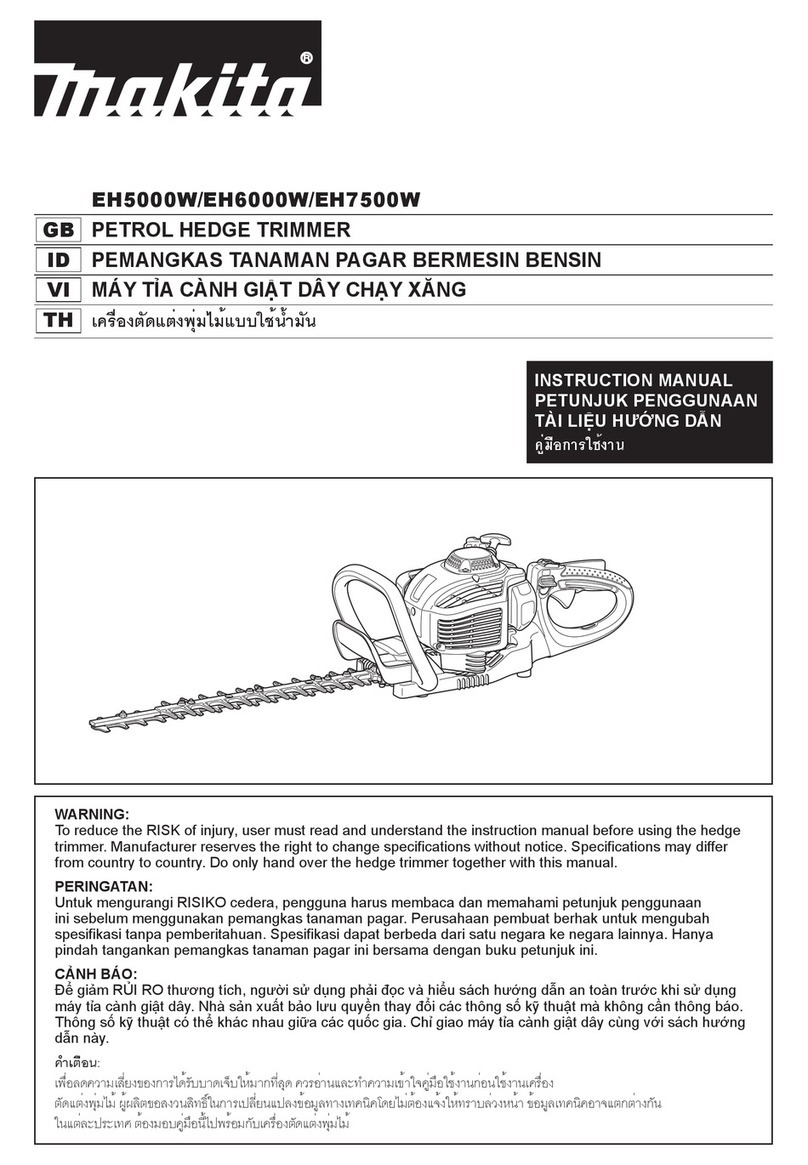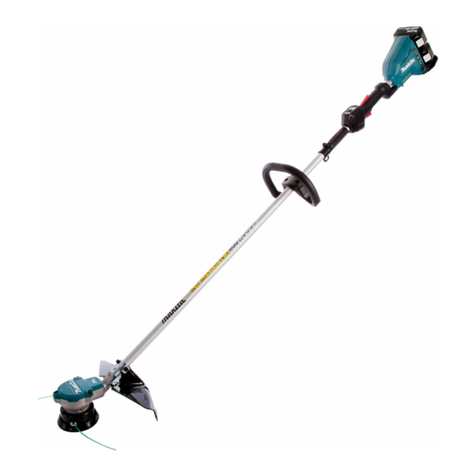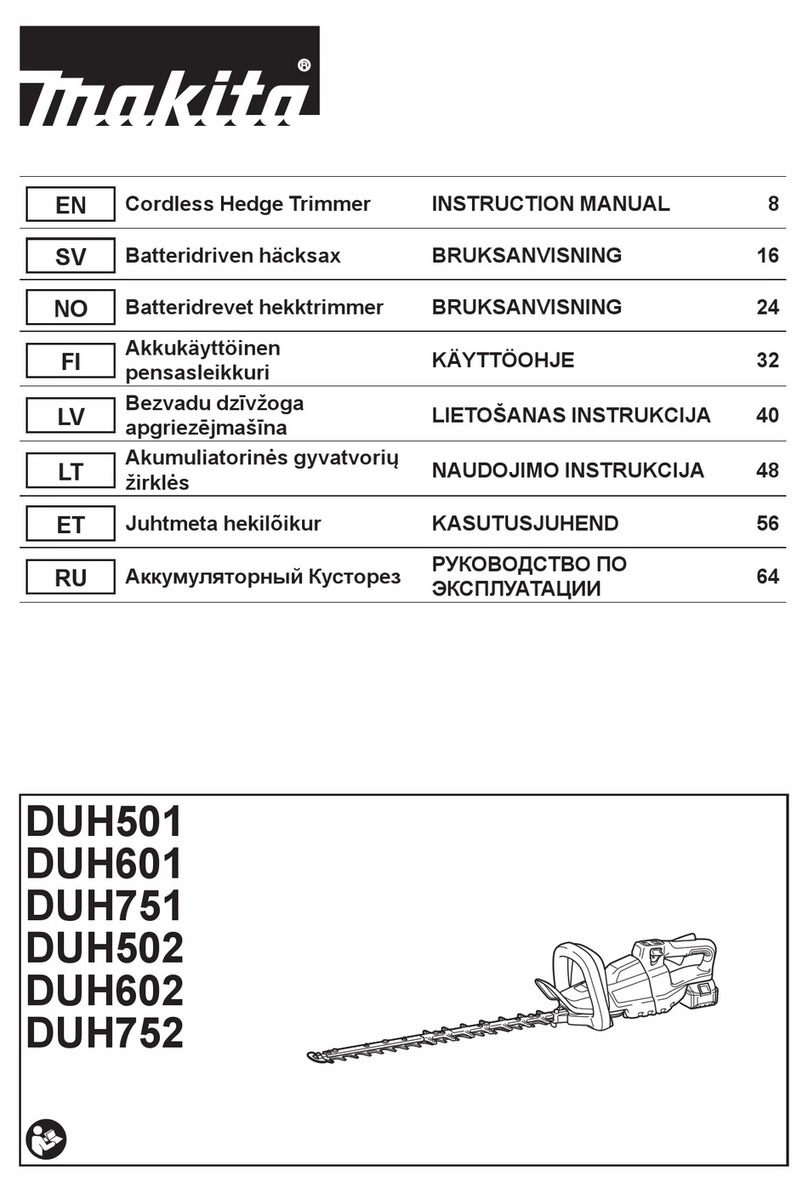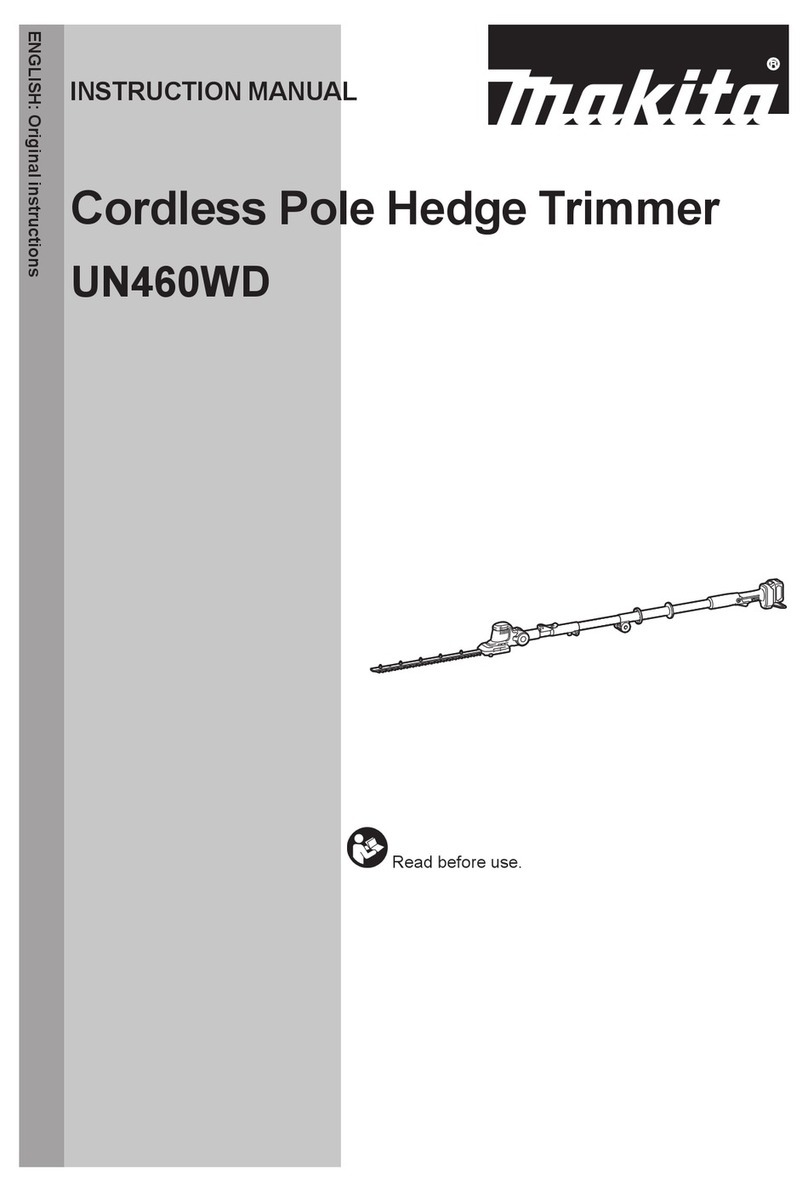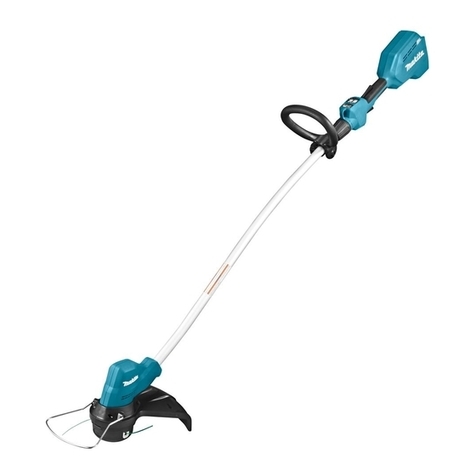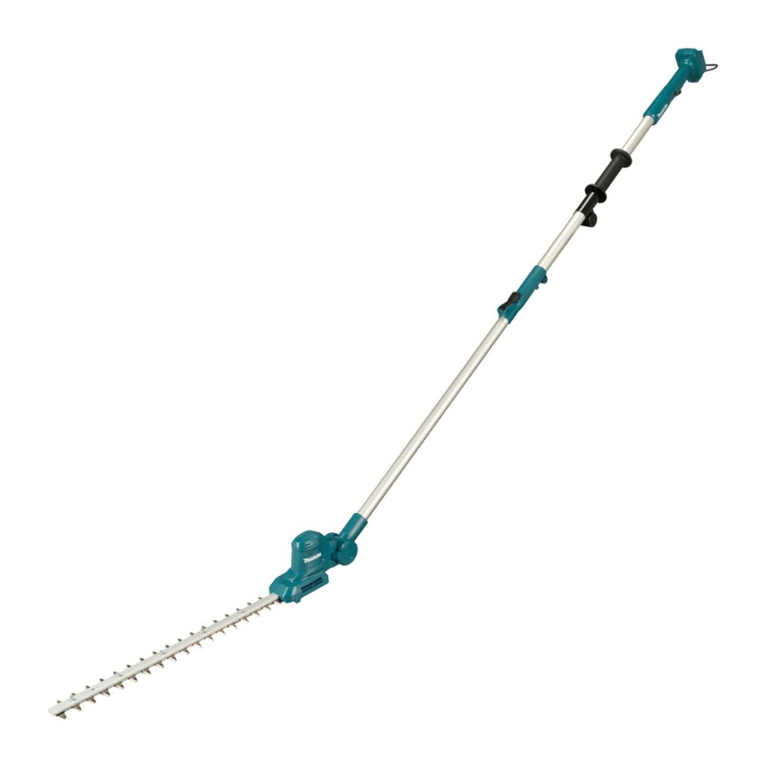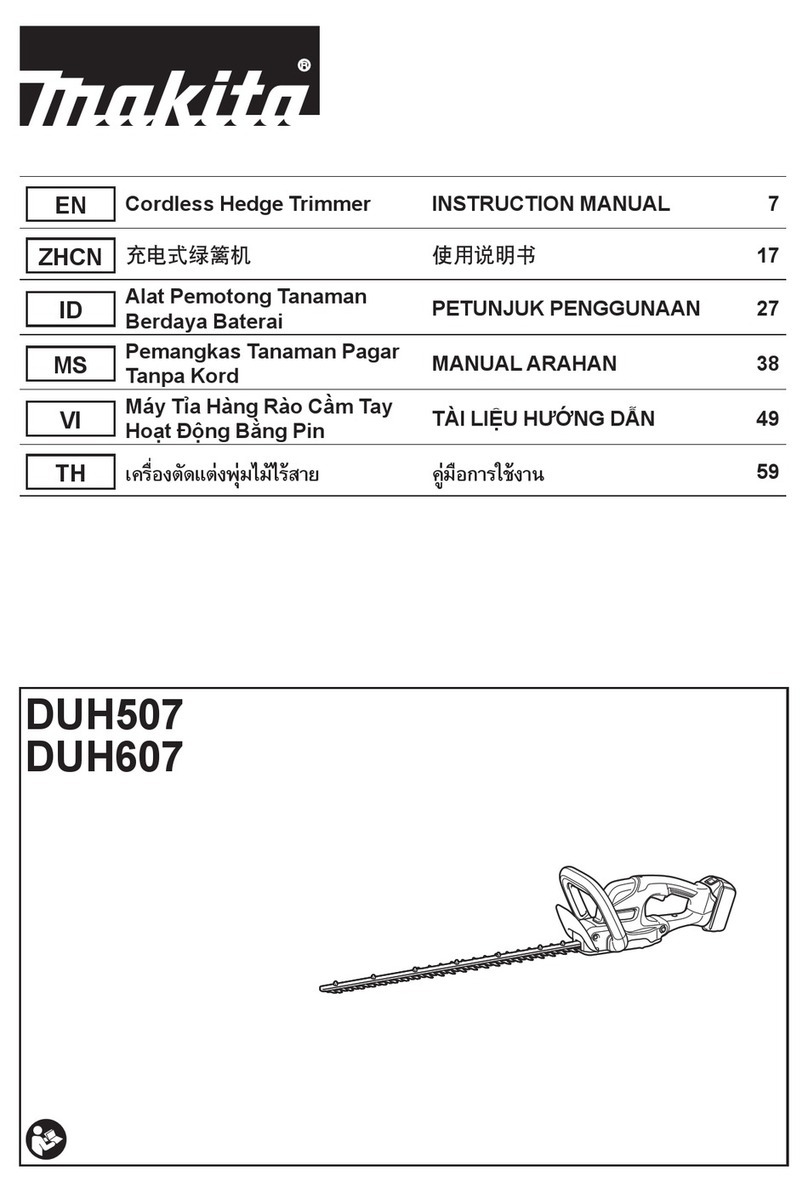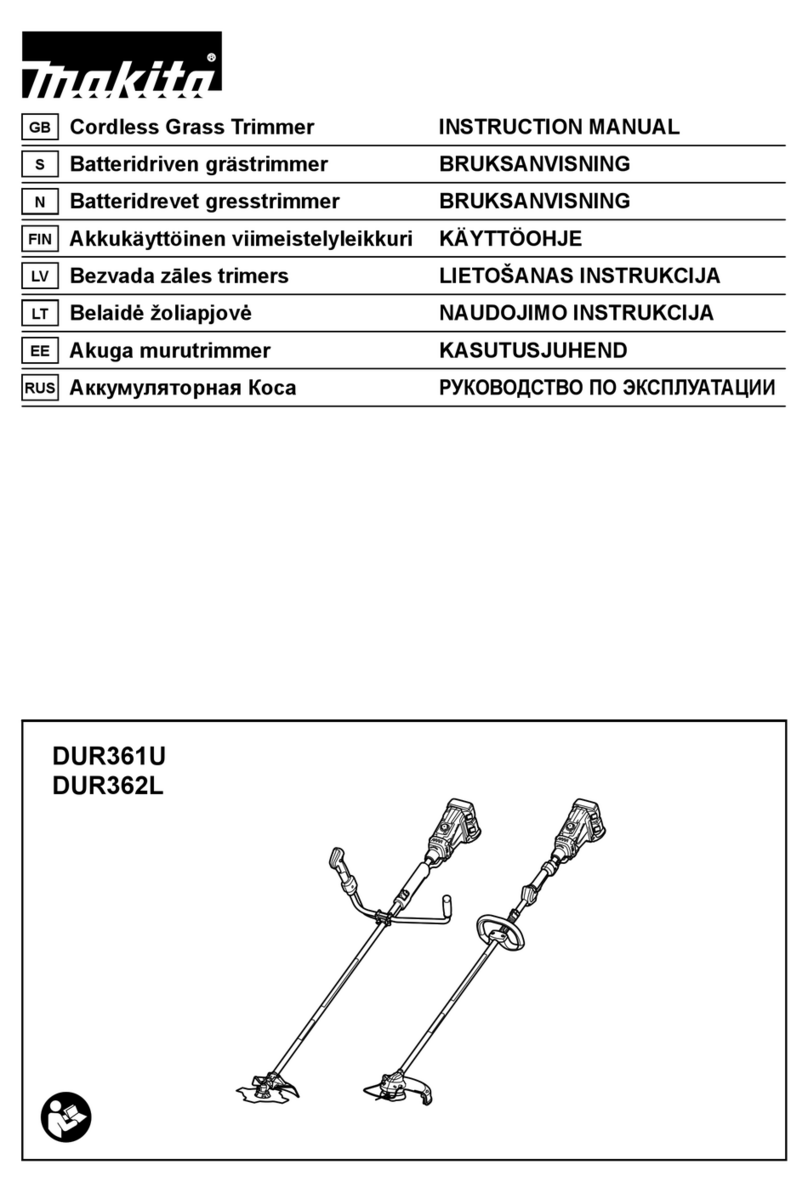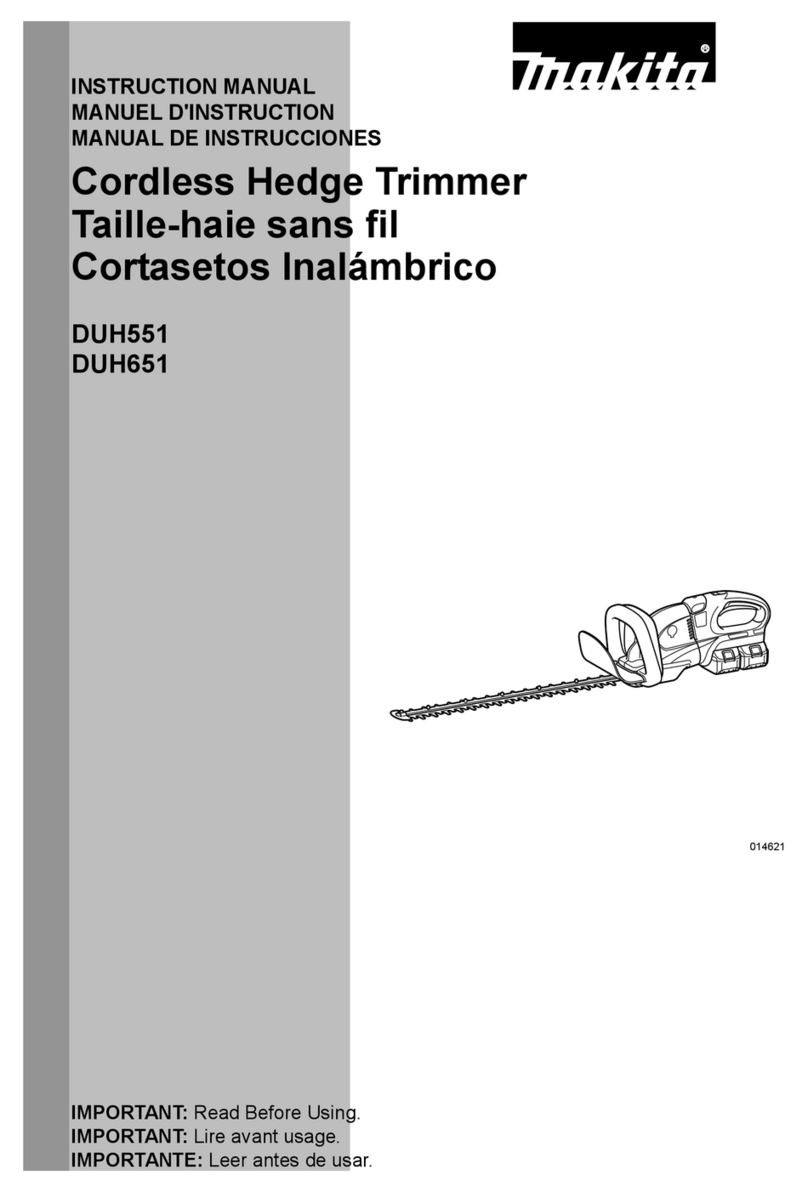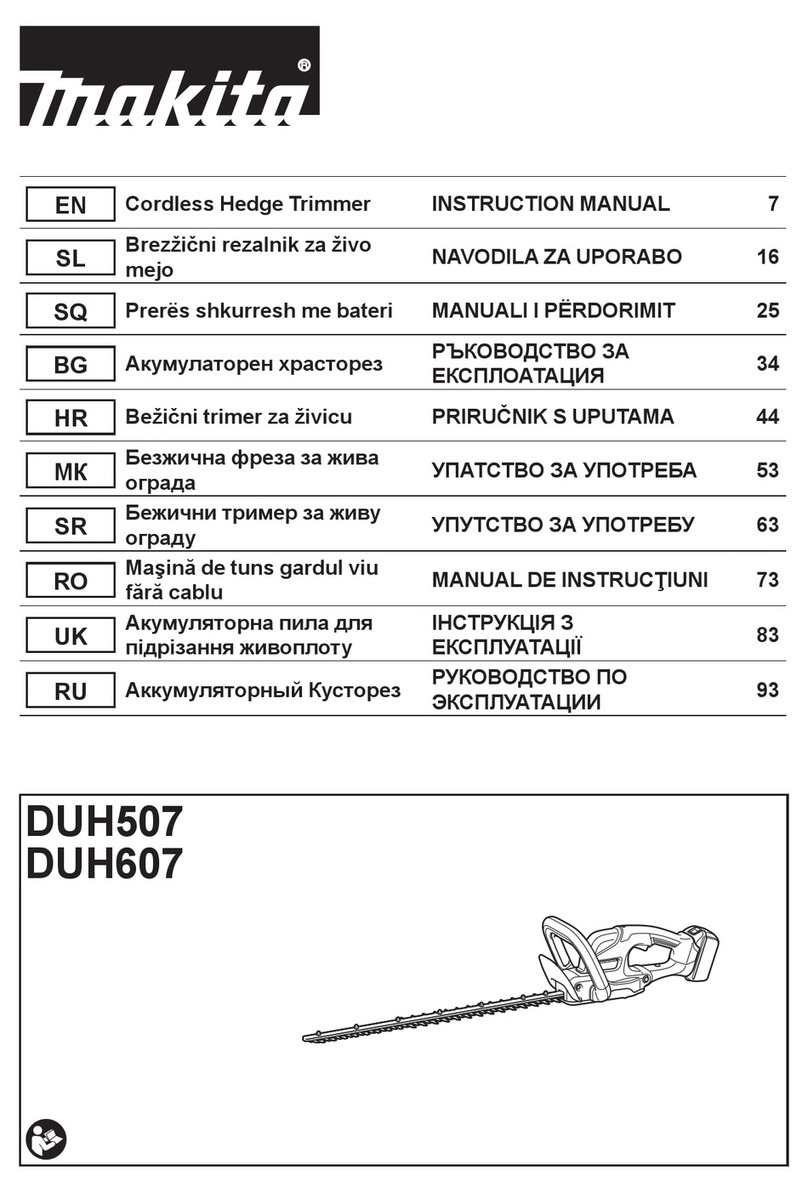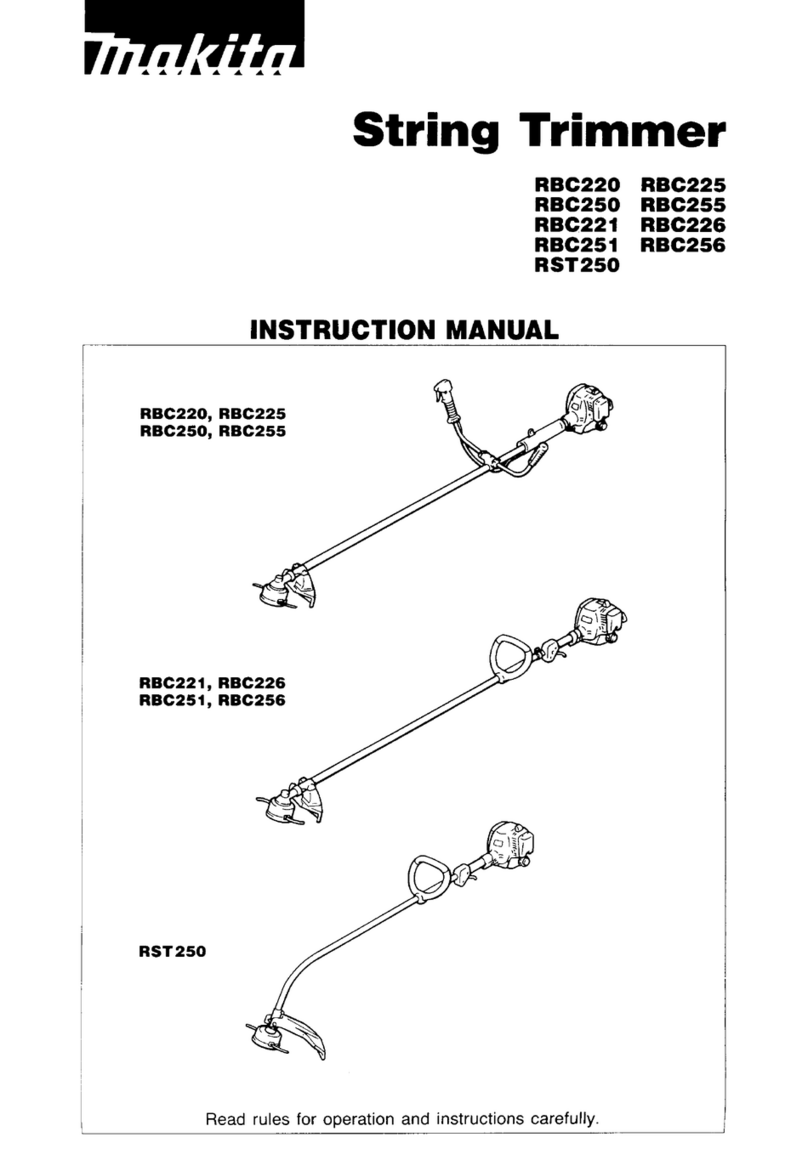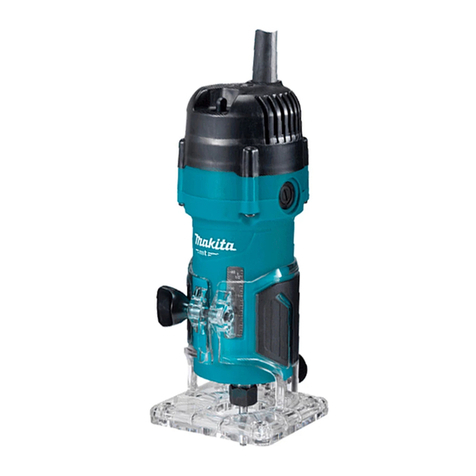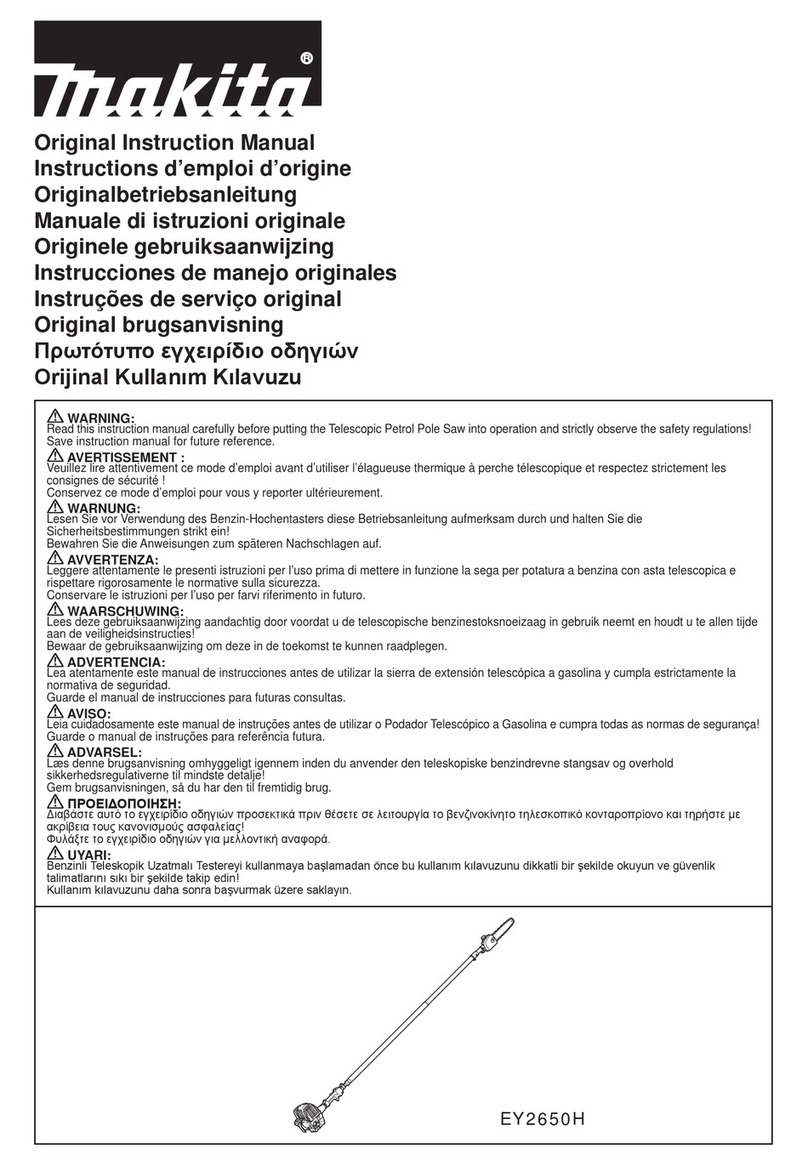
5ENGLISH
5. Never climb up into trees to perform cutting
operation with the tool.
6. Never work on unstable surfaces.
7. Remove sand, stones, nails etc. found within
the working range. Foreign particles may dam-
age the nylon cutting head.
8. Should the nylon cutting head hit stones or
other hard objects, immediately switch o the
motor and inspect the nylon cutting head.
9. Before commencing cutting, the nylon cutting
head must have reached full working speed.
10. During operation always hold the tool with
both hands. Never hold the tool with one hand
during use. Always ensure a safe footing.
11. The nylon cutting head has to be equipped
with the guard. Never run the tool with dam-
aged guards or without guards in place!
12. All protective equipment such as guards sup-
plied with the string trimmer must be used
during operation.
13. Except in case of emergency, never drop
or cast the tool to the ground or this may
severely damage the tool.
14. Never drag the tool on the ground when mov-
ing from place to place, the tool may become
damaged if moved in this manner.
15. Always remove the battery cartridge from the
tool:
— whenever leaving the tool unattended;
— before clearing a blockage;
— before checking, cleaning or working on
the tool;
— whenever the tool starts vibrating
abnormally;
— whenever transporting the tool.
16. Always ensure that the ventilation openings
are kept clear of debris.
17. Cutting elements continue to rotate after the
motor is switched o.
18. Do not operate power tools in explosive atmo-
spheres, such as in the presence of ammable
liquids, gases or dust. Power tools create sparks
which may ignite the dust or fumes.
19. Take a rest to prevent loss of control caused
by fatigue. We recommend to take a 10 to
20-minute rest every hour.
20. Hold the power tool by insulated gripping
surfaces only, because the cutting tool may
contact hidden wiring. Cutting tool contacting a
“live” wire may make exposed metal parts of the
power tool “live” and could give the operator an
electric shock.
21. Do not use the tool on steep slopes.
22. The shoulder harness must be used during
operation, if supplied with the tool.
23. Do not start the tool when the cutting tool is
tangled with cut grass.
24. Before starting the tool, be sure that the cut-
ting tool is not touching the ground and other
obstacles such as a tree.
25. Always keep your hands, face, and clothes
away from the cutting tool when it is rotating.
Failure to do so may cause personal injury.
26. Only use the cutting tool that are marked with
a speed equal or higher than the speed marked
on the tool.
27. Do not touch the gear case during and imme-
diately after the operation. The gear case
becomes hot during operation and can cause burn
injury.
28. Do not use the tool when there is a risk of
lightning.
29. When you use the tool on muddy ground, wet
slope, or slippery place, pay attention to your
footing.
30. Avoid working in poor environment where
increased user fatigue is expected.
31. Do not use the tool in bad weather where visi-
bility is limited. Failure to do so may cause fall or
incorrect operation due to low visibility.
32. Do not submerge the tool into a puddle.
33. Do not leave the tool unattended outdoors in
the rain.
34. When wet leaves or dirt adhere to the suc-
tion mouth (ventilation window) due to rain,
remove them.
35. Do not use the tool in the snow.
36. Swing the tool evenly in a half-circle from
right to left, like using a scythe. This allows the
proper segment of the blade to contact plants to
be cut.
37. Check the cutting attachment frequently
during operation for cracks or damages.
Before the inspection, remove the battery
cartridge and wait until the cutting attachment
stops completely. Replace damaged cutting
attachment immediately, even if it has only
supercial cracks.
Vibration
1. People with poor circulation who are exposed
to excessive vibration may experience injury
to blood vessels or the nervous system.
Vibration may cause the following symptoms
to occur in the ngers, hands or wrists: "Falling
asleep" (numbness), tingling, pain, stabbing sen-
sation, alteration of skin color or of the skin. If any
of these symptoms occur, see a physician!
2. To reduce the risk of "white nger disease",
keep your hands warm during operation and
well maintain the tool and accessories.
Maintenance instructions
1. The condition of the nylon cutting head, pro-
tective devices must be checked before com-
mencing work.
2. Turn o the motor and remove the battery
cartridge before carrying out maintenance,
replacing the nylon cutting head or nylon cord
and cleaning the tool.
3. Check for loose fasteners and damaged parts
such as cracks in the nylon cutting head.
4. Follow instructions for lubricating and chang-
ing accessories if applicable.
5. When not in use store the equipment in an
indoor dry location that is locked up or out of
children's reach.

